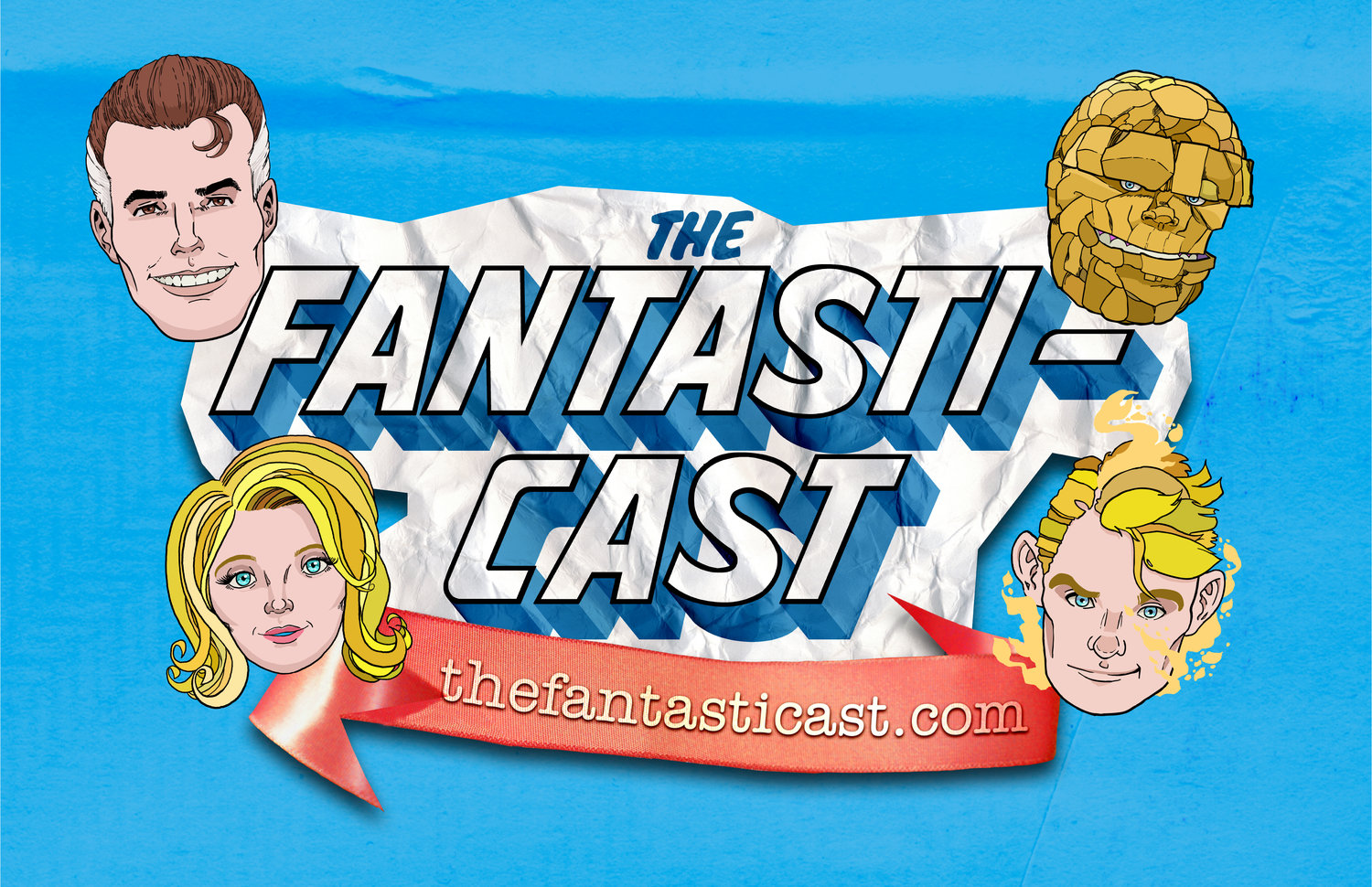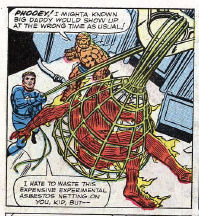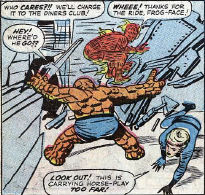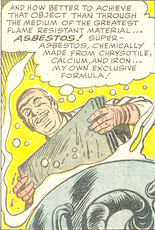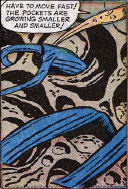Drawn by: Jack Kirby
Inking: Dick Ayers
Lettering: Art Simek
More Johnny today, as he continues to use his flaming powers in ways that defy belief, credibility, and science.
He's on the search for Namor, who has kidnapped Sue. Needing to locate a submersible device beneath the ocean, Johnny remembers how Reed had showed him how to create a probing device with his flame. Presumably, the idea is to use his heat in a similar fashion to the use of sound in sonar and radar devices.
This sort of makes sense - both heat and sound radiate outwards from their point of origin. Both react to the presence of objects in their path, either reducing their passage or obstructing it totally. And both reflect off various surfaces. So, initially, this doesn't seem like such a bad idea. Johnny could be detecting the reflection of his own heat to identify where Namor's sub is.
But what is he using to detect those reflections? I see no measuring equipment, and Johnny's yet to display any evidence of being able to sense heat, especially when the reflected heat, through water, is going to be less intense than the heat being emitted.
No, sorry Johnny, even with Reed backing you up there, it just doesn't make sense.
Don't forget to let us know your feel-good Fantastic Four reading experiences!
Check out our coverage of Fantastic Four Annual #1 on our sixteenth episode: The Best Of Annuals, The Worst Of Annuals.
[audio http://traffic.libsyn.com/ffcast/FF_Episode_16.mp3]
